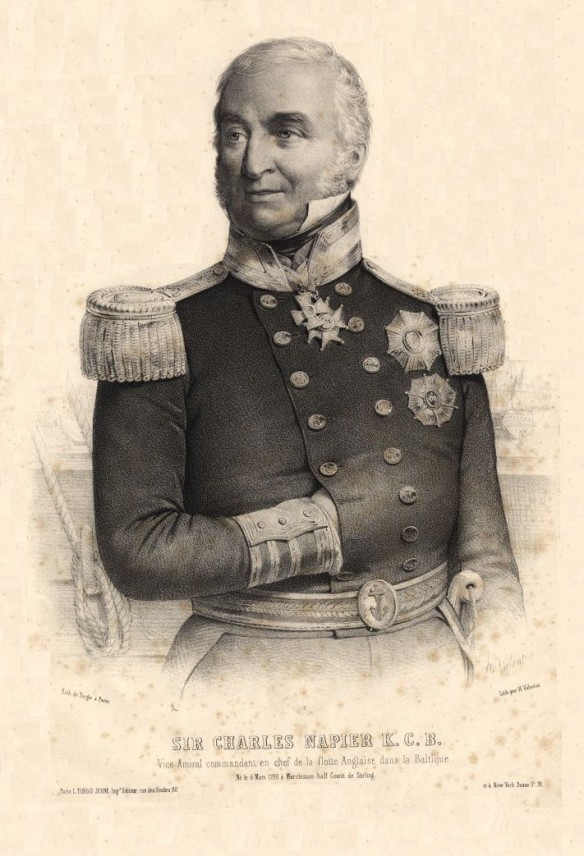Crimean War, 1854–1856: Baltic Sea Operations
Charles Napier was a distinguished British naval officer with over a half century of service on the high seas. He is probably best known as commander of the Baltic Fleet from 1854 to 1855, during the Crimean War.
Born in Scotland on 6 March 1786, Napier entered the Royal Navy as a midshipman in 1799. Napier participated in numerous operations against the French du ring the Napoleonic Wars and fought against the Americans during the War of 1812.
In the early 1830s he served successfully as a vice admiral in the Portuguese Navy. Reinstated in the Royal Navy in 1834, he was promoted to commodore in 1839. Napier participated in the storming of Sidon in September 1839 and Acre the following month.
Napier was promoted to vice admiral in May 1853. The Russians attacked Turkey that summer, and the Turks declared war on Russia on 5 October 1853. The British (and later the French) fleets entered the Black Sea to bolster Turkey. War fever broke out in these countries, with British troops sailing in February 1854 and French soldiers a few weeks later for Turkey.
Napier was appointed commander of the hastily assembled Baltic Fleet and sailed for the Baltic on 10 March 1854. With British and French expeditionary forces en route to Turkey, Napier’s mission was to seal the Baltic, destroy the Russian fleet, and protect Danish and Swedish shipping and territory from Russian attack.
War was declared on 28 March 1854. His fleet arrived at the entrance to the Gulf of Finland on 17 April 1854. When the weather deteriorated, Napier’s fleet withdrew to Stockholm .He reconnoitered defenses at Hango and Sveaborg but found them to be too strong for his guns. Leaving ships at Sveaborg, Napier sailed for Kronstadt, arriving on 26 June 1854. Thirty Russian ships were anchored nearby. After a careful reconnaissance, it was determined that only shallow-draught ships could approach the Russian fortress.
Napier sailed back to Sveaborg and received word that 10,000 French soldiers with 10 guns would be sent on British ships to attack either Sveaborg or Bomarsund, guarding the best entrance to the large harbor on Aland. The allied force began bombarding Bomarsund, the more vulnerable of the two fortresses, on 13 August 1854, and it surrendered shortly thereafter. This success, however, achieved very little.
Napier wanted to continue operations, but the French fleet began to withdraw from the Baltic on 4 September 1854. The Royal Navy maintained the blockade on the Russians until the end of October 1854 then returned to port at Spithead. Napier was brusquely ordered, “you are hereby required and directed to strike your flag, and come on shore” (Judd 1975, p. 170).
This humiliating relief of command was the culmination of a long controversy between Napier and the Admiralty. Napier was eventually exonerated, and the Admiralty offered him award of the Knight Grand Cross – the highest class- of the Order of the Bath. As a sign of his contempt, Napier refused this honor. Napier, called “Fighting Charlie” by his admirers and “Black” or “Dirty Charley” by others because of his swarthy complexion and sloppy dress, was promoted to admiral in 1858. He died in London on 8 November 1860.
